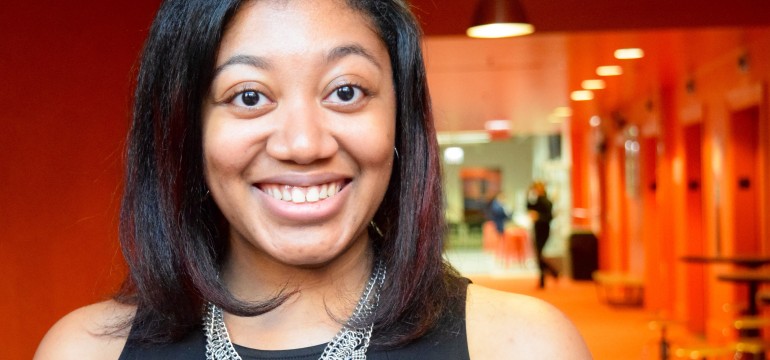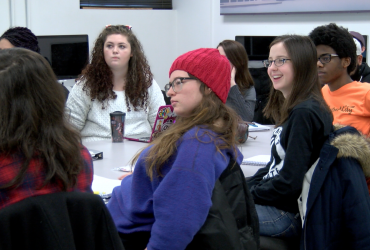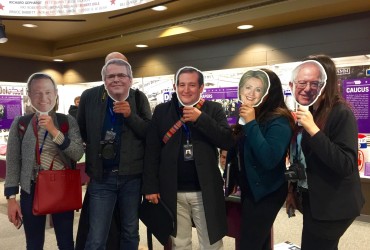By Martin Xavi Macias, Journalism graduate student (’16)
Growing up in Detroit, Tatiana Walk-Morris said she couldn’t stand watching the news eadereports about corrupt politicians and violence that plagued the city.
“Those stories need to be told, but the media only showed negative images,” Walk-Morris said. “I looked out the window and saw a different image of my city than the one I got [on the screen].”
The Columbia graduate grew up watching her grandfather read Detroit Free Press, Jet Magazine and Black Enterprise magazine. She said there was something empowering about “seeing positive images of black people in those magazines” which led her to focus on magazines when she studied journalism at Columbia.
Today, the DNAInfo reporter plays her part in changing the way that reporting is done.
“I’m the person that’s looking at overlooked voices,” Walk-Morris said. “For me, journalism means telling stories that wouldn’t otherwise be told.”
Walk-Morris graduated with her bachelor’s in multimedia journalism in December 2014. While in school, she worked as a campus reporter and later as the associate editor at The Columbia Chronicle. Outside of class, she interned at NBC News.
After graduating, Walk-Morris interned at Crain’s Chicago and also worked as a managing editor at The Chicago Defender.
In Nov. 2015, Walk-Morris published an article in the New York Times about a black Chicago area family that spent a year buying only from black-owned businesses.
“It was a complex topic that I wanted to get deeper into,” Walk-Morris said. “I really wanted to explore this question of how to build black wealth.”
One would think getting such a major, impressive byline only a year after graduating would be something to boast heavily about, but Walk-Morris played it cool.
Walk-Morris, who is a black woman, has been covering the BlackLivesMatter movement in the past year. She said she feels “a responsibility to tell the story right as a person of color,” and cry foul when she see’s “odd headlines” that misrepresent activists or the movement as a whole.
Walk-Morris said she read a major newspaper headline that described a protest event as “Black Friday Rage.” She said the headline seemed strange since no one had been shot, there were no scuffles, and no one was burning things.
“I wouldn’t call that rage, that is passion,” she said. “Young people are smart, [they] understand how they’re portrayed. It creates a sense of guardedness, you’re not sure what you’re going to read.”
In an industry that has traditionally been white and male, Walk-Morris says she thinks there is a huge need for diversity in the newsroom, especially in light of ever-shrinking newsrooms.
“Smaller staff means fewer eyes on headlines, captions. Fewer perspectives to say hey we should rethink that,” she said. “The effects of that are people less willing to come to the media.”
Walk-Morris said she sees more women and people of color getting into journalism, but support systems to make sure they succeed in school are lacking. This has an impact on the kind of reporting produced, she said.
“Anybody [on social media] can tell a story in their own way. They may not think about ethics, fairness and diligent reporting the way [journalists] do,” she said. “Use your words wisely because the keyboard is mightier than the sword.”






